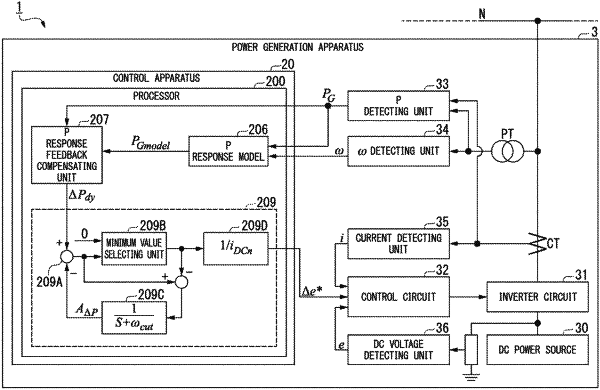| CPC G05F 1/66 (2013.01) [G05F 1/247 (2013.01); H02P 9/04 (2013.01)] | 4 Claims |

|
1. A control apparatus configured to control driving of a power generation apparatus or a load apparatus, the control apparatus comprising:
a processor configured to:
predict a response of an electric output from the power generation apparatus in an ideal state in which there is no delay of a power generator caused by a static capacitance of a power transmission line of a response of an electric power supplied to the load apparatus in an ideal state in which there is no delay of a power supply to the load apparatus caused by the static capacitance of the power transmission line based on observed values of the electric output from the power generation apparatus or the electric power supplied to the load apparatus and observed values of an angular frequency of the electric output from the power generation apparatus or the electric power supplied to the load apparatus; and
calculate a correction value of the electric output from the power generation apparatus or the electric power supplied to the load apparatus based on a deviation between the observed values of the electric output from the power generation apparatus or the electric power supplied to the load apparatus and: (i) the response of the electric output from the power generation apparatus in the ideal state in which there is no delay of the power generator caused by the static capacitance of the power transmission line; or (ii) the response of the electric power supplied to the load apparatus in the ideal state in which there is no delay of the power supply to the load apparatus caused by the static capacitance of the power transmission line.
|